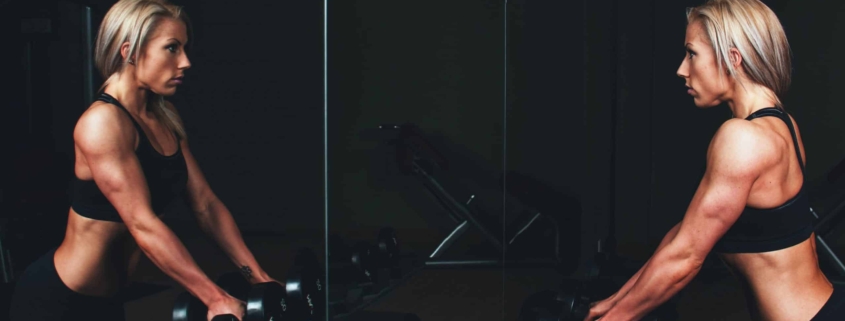“The rule is: the basics are the basics, and you can not beat the basics!”
Charles Poliquin 5th March 1961 – 26th September 2018
The previous training article covered the full body split, where we use a balanced approach to hit all the body’s major muscle groups in a single session. This is a fantastic introduction to training, weight training in particular, and is also great for those who are busy and when they go to the gym want to maximise the return in investment while hitting the essential exercises in a balanced manner.
What is the Lower and Upper split?
As we progress our training, we can organise our training differently, and the following best approach is to use the ‘lower-upper split’. As it says on the tin, this is where the sessions are divided into working the upper and lower body separately, which allows us to do a few more things to advance training and develop more results.
Why is it beneficial from doing this?
You get more done:
Since the sessions are now dedicated to one body part at a time, you can put more things into that session because you no longer have to include all major muscles of the lower body.
So essentially, you can put more volume of quality work into the session, from being able to apply 45 minutes will lead to faster results towards your goal. In comparison, the full-body session may have only had 15 to 20 minutes dedicated to the lower, still leading to results but might take a little longer.
Frequency!
You are also maintaining a sound frequency of training with this split; a training session done 2x/week will lead to better and quicker improvement than 1x/week, provided the quality is there.
Remember, this frequency is alongside the increase in volume mentioned in the previous point. So together, this is an excellent advancement in the training stimulus, accelerating the results and development you are after.
Addressing Specific Areas:
Since there is now more time in a session to work on only one half of the body, we can also look to address specific areas for improvement.
For example, many people want to improve their chin-up strength, and while you do have to train the chin-up in various ways to get better at it, you also need to look at the individual muscles contributing to the movement.
The four main areas to develop the chin-up are the strength of the upper back, ‘lat’ muscle, the ‘scapula’ (think shoulder blades) and the biceps. So if someone was struggling on this movement or wanted to get stronger with their chin-ups, then a dedicated upper body session allows for more upper back, scapula and bicep (arm) work to be put into the upper body session.
Alternatively, it may be that after years of working at a desk and travelling that you need to improve your posture, in which case we can plan some exercises for more upper back (horizontal pull exercises) to strengthen this area. Mobility for the chest and shoulders, together with improving your posture.
Below are some examples of how the program can be tailored to you, your goals, and your health and body. Having a quality coach will help you identify where you may need to devote a little time to help you get the results you want and achieve your best health and performance.
How to apply Lower and Upper body split?
A 3 Day Rotation:
This requires 3 workouts a week, and because you alternate between upper and lower body, it means that one week you will do 2 upper sessions, and next, you’ll only do 1 upper session.
- Week 1 – Upper (Monday/Friday), Lower (Wednesday), Rest (Tues/Thurs/Sat/Sun)
- Week 2 – Lower (Monday/Friday), Upper (Wednesday), Rest (Tues/Thurs/Sat/Sun)
A 4 Day Rotation:
This is the ideal weekly organisation since it means that each week you can cover both sessions twice.
- Upper (Monday/Thursday), Lower (Tuesday/Friday), Rest (Wed/Sat/Sun).
An example Lower Body Program
A. Barbell Back Squat, heels elevated, 8 Sets, 8 Reps, 4:0:1:0 tempo, 120s rest
B.45% Back Extension, DB across chest, 2 Sets, 10-12 Reps, 3:0:1:1 tempo, 120s rest
Notes: A series, Use the same weight all the way through. Once completed, all 8 sets for 8 reps with the same weight all the way through. You increase the weight in the next training session.
B series, Build up to one heavy set.
An example Upper Body Program
A1. DB Bench Press, 30% Incline, 4 Sets, 10-12 Reps, 4:0:1:0 tempo, 120s rest
A2. *Chin-up, Neutral grip, hold the top position, 4 Sets, 1 Rep, 4:30:0:0 tempo, 120s rest
B1. BB Behind the Neck Press, Seated, 4 Sets, 8-10 Reps, 4:0:1:0 tempo, 90s rest
B2. Seated Row to Neck, Rope, thumbs upwards, 4 Sets, 10-12 Reps, 3:0:1:1 tempo,90s rest
C. 45% Degree Incline Bicep Curl, Dumbbell, Supinated Grip 3 Sets, 6-8 Reps, 4:0:1:0 tempo, 120s rest
Notes: Build up to one heavy set.
* If unable to complete isometric hold, move to Lat Pull Down, Neutral grip, 10-12 Reps, 4:0:1:0 tempo, 120s rest
So now we have seen the full-body training split and the upper-lower split; we’ve learned why these are of great use and provided an example program. Let us know how you get on with these, and of course, any further questions get in touch.
Consultations
We’re always here to help. If you have any questions or would like advice about supplements, nutrition, or training, please book in for a consultation.
Disclaimer
Always speak with your physician or other healthcare professionals before making any nutritional & lifestyle changes or before taking any nutritional supplement. For more information, please view our terms & conditions.







